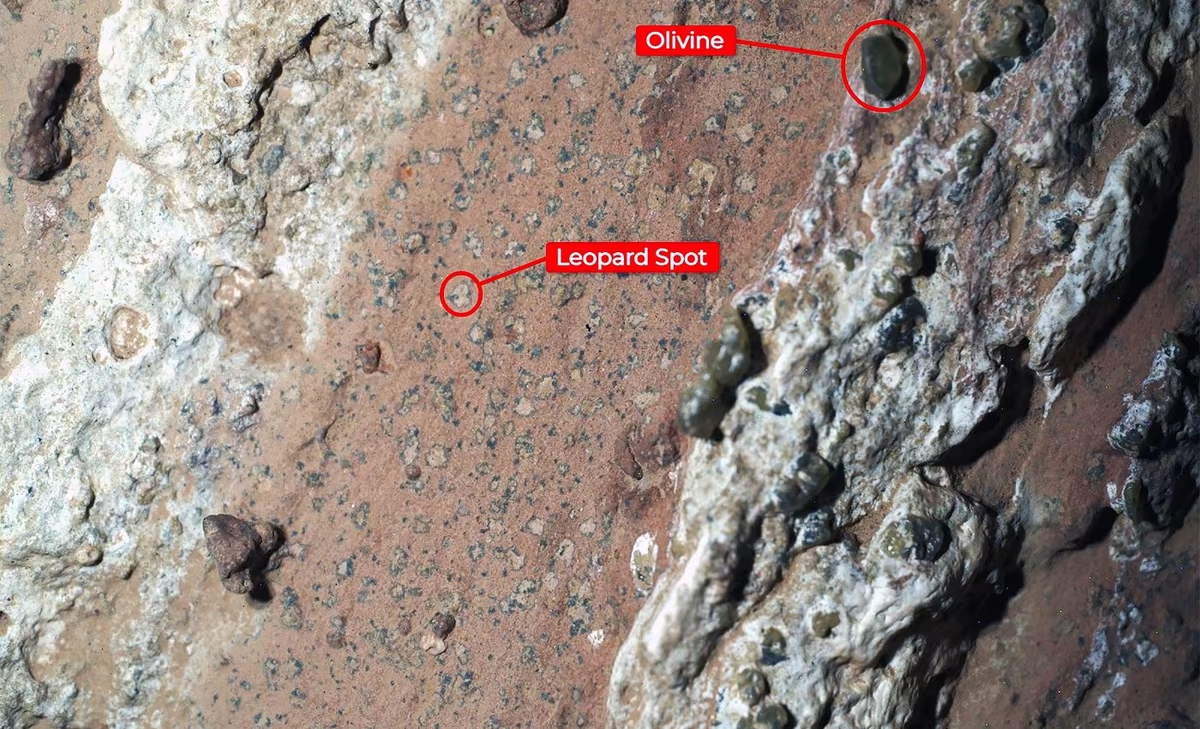By Jake Hoffman
Copyright breezyscroll

NASA’s Perseverance rover has uncovered its most compelling evidence so far in the search for extraterrestrial life. The robotic explorer has drilled Martian ‘leopard spot’ rocks that show textures and minerals resembling microbial activity on Earth, sparking cautious optimism among scientists.
The discovery, published in Nature, marks a turning point in astrobiology: while not proof of Martian life, it may be the clearest signal yet that the Red Planet once hosted conditions suitable for microbes.
What exactly did Perseverance find?
In July 2024, Perseverance drilled a mudstone core sample named Chevaya Falls from Sapphire Canyon in the ancient Neretva Vallis river system. Inside, researchers observed unusual textures, round nodules nicknamed “leopard spots,” and minerals that often form in the presence of living organisms on Earth.
Key findings include:
Organic carbon, along with phosphate, iron, and sulfur detected by the rover’s SHERLOC and PIXL instruments.
Two notable minerals, vivianite and greigite, are strongly associated with microbial processes on Earth.
A distinctive structure where vivianite rims encircle greigite cores, mimicking microbial reduction reactions seen in oxygen-poor, water-rich sediments.
These features suggest the possibility of biosignatures, chemical or physical markers that life may have left behind.
Why are these minerals important?
Vivianite: A blue-green mineral that often forms when microbes reduce iron in waterlogged environments.
Greigite: A magnetic mineral linked to sulfate-reducing bacteria in Earth’s sediments.
On Earth, the pairing of vivianite and greigite frequently points to microbial activity. Finding this pattern on Mars raises the possibility that similar processes once took place there.
Does this prove life on Mars?
Not yet. NASA officials are careful to frame this as a “potential biosignature,” not direct evidence of life.
Nicky Fox, head of NASA’s Science Mission Directorate: “It’s not life itself.”
Joel A. Hurowitz, lead author of the study from Stony Brook University: “We cannot claim this is more than a potential biosignature.”
Sean Duffy, NASA’s acting administrator: “This very well could be the clearest sign of life that we’ve ever found on Mars.”
In other words, the rocks display conditions consistent with microbial life, but non-biological chemistry could also explain the patterns.
What happens next?
The Chevaya Falls core has been sealed and stored for possible return to Earth under NASA’s Mars Sample Return program. If successful, scientists will use advanced laboratory techniques far beyond Perseverance’s onboard instruments to determine whether life truly left its fingerprints in these rocks.
The stakes are high. Confirming a biosignature would represent one of the most profound scientific discoveries in history, proof that life is not unique to Earth.
Why this matters in the bigger picture
A step closer to answering a fundamental question: Are we alone in the universe?
Mars as Earth’s mirror: The findings highlight how early Mars may have shared conditions with early Earth, where microbial life first emerged.
Foundation for human exploration: As NASA pushes toward putting astronauts on Mars in the 2030s, understanding the planet’s biological potential will shape exploration strategies.
A cautious but exciting milestone
Perseverance’s “leopard spots” discovery sits at the intersection of hope and restraint. Scientists emphasize that extraordinary claims require extraordinary evidence, yet many believe the rover has brought humanity closer than ever to confirming life beyond Earth.
As Duffy summed up, “NASA’s commitment to gold standard science will continue as we pursue our goal of putting American boots on Mars’ rocky soil.”
NASA’s Perseverance rover has drilled Martian rocks containing minerals and textures resembling microbial activity on Earth. The findings — vivianite and greigite nodules nicknamed “leopard spots” may represent the clearest potential biosignature yet of life on Mars. Scientists stress caution: this is not proof of life, but the strongest hint discovered so far.



